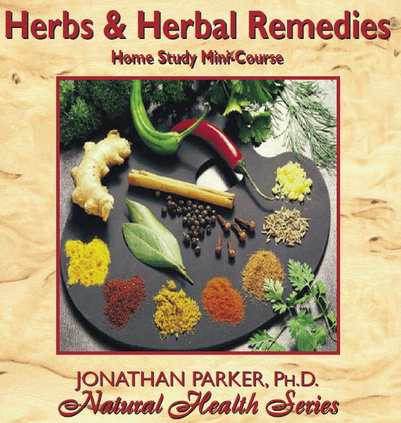How to Dry and Store Herbs for Year-Round Use

Before diving in, please note: This post is for informational purposes only. If you’d like to know more about how we approach topics, feel free to check out our friendly Disclaimer Page.
Hey there, amazing readers! 🖐️ Just a quick note: yes, we know there are a lot of ads here. Trust us, we get it—it’s not the prettiest look, but they help us keep this blog alive and kicking. Those pesky little ads cover the costs of all the behind-the-scenes magic, from hosting and tech stuff to creating content we hope you’ll love.
We’re committed to delivering quality posts, and your support (even just sticking around despite the ads) means everything to us. So, bear with us, and thanks for helping us keep the good vibes rolling. Now, on to the fun stuff! 😉
TRANSLATE BUTTON AT THE END OF THE ARTICLE
A Quick Overview
Growing your own herbs can be a delightful experience, filling your garden or kitchen with vibrant colors, fragrant aromas, and a sense of achievement.
But what happens when you find yourself swimming in a sea of fresh herbs?
You can’t use them all at once, so the next best thing is to dry and store them for future use.
In this guide, I’ll share my tried-and-true methods for drying and storing herbs, ensuring that you can enjoy your homegrown treasures year-round.
Let’s dive in!
The Joy of Growing Your Own Herbs at Home
Growing your own herbs is like having a mini farm right in your backyard or on your windowsill.
There’s something magical about planting tiny seeds and watching them sprout into lush plants.
Fresh herbs can elevate any meal, transforming a simple dish into something extraordinary.
From basil to thyme, each herb carries its own personality and flavor.
I remember the first time I picked basil from my garden.
I rushed inside, tossed it into a salad, and couldn’t get over how fresh and fragrant it was.
It ignited a passion in me to grow more herbs.
Not only do they taste better fresh, but they also provide a sense of satisfaction.
Knowing that I nurtured those plants from seed to table brings a smile to my face.
Plus, the benefits of growing herbs extend beyond culinary use.
Many herbs can deter pests and attract beneficial insects.
They’re often low maintenance, require minimal space, and can flourish in pots, making them perfect for anyone, even those living in apartments.
But what do you do when your herbs start to outgrow their welcome?
That’s where the art of drying comes in, allowing you to savor those garden-fresh flavors throughout the year.
Choosing the Right Herbs for Drying and Storing
Not all herbs dry equally well.
Some retain their flavor and aroma beautifully, while others may lose their punch.
Choosing the right herbs is crucial for a successful drying experience.
Here are some popular options:
Basil: A summer staple, basil dries well and retains much of its flavor.
Thyme: This hardy herb dries nicely and can be used in countless dishes.
Oregano: A favorite for Italian cooking, oregano holds its flavor well after drying.
Rosemary: Robust and fragrant, rosemary can add depth to many recipes.
Sage: Earthy and savory, sage is perfect for winter dishes.
I often recommend experimenting with different herbs to find your favorites.
You may find a surprising love for dried chives or dill.
Just remember, herbs with a high moisture content, like parsley, can be trickier to dry and might not store as well.
Discover the "Healing Power of Herbs" 🌿
Harvesting Herbs: When and How to Pick Them
Timing is everything when it comes to harvesting herbs.
The best time to snip your herbs is just before they bloom.
At this stage, the leaves are packed with essential oils and flavor.
For most herbs, this is generally early in the morning after the dew has dried but before the sun has fully risen.
Here’s how I approach harvesting:
Choose the right tool: Use sharp scissors or garden shears for a clean cut.
Take only what you need: Avoid over-harvesting; leave enough on the plant to encourage further growth.
Select healthy stems: Look for vibrant, green stems and leaves, avoiding any that are yellowing or wilting.
When I harvest, I often take a few leaves from each plant instead of stripping one entirely.
This method allows me to enjoy a steady supply of fresh herbs while giving the plants time to recover.
Essential Tools for Drying Your Favorite Herbs
Before you start drying your herbs, gather the right tools.
Here’s a handy list of items you might need:
Scissors or garden shears: For harvesting your herbs.
String or twine: If you’re air drying, you’ll need something to tie your herb bundles.
Baking sheets: For oven drying or dehydrating.
Dehydrator: A fantastic investment if you plan to dry many herbs regularly.
Glass jars or airtight containers: Ideal for storage once your herbs are dried.
Having these tools on hand makes the process smoother.
I’ve learned the hard way that using dull scissors can lead to bruised herbs, which isn’t ideal for drying.
Air Drying: A Simple Method for Perfect Results
Air drying is one of the oldest and most straightforward methods for preserving herbs.
It’s chemical-free, requires little equipment, and can be done almost anywhere.
Here’s how I do it:
Prepare the herbs: Remove any yellow or damaged leaves and wash them gently to remove dirt.
Pat them dry with a towel.
Bundle them up: Gather a small handful of stems and tie them together with string or twine.
I find that 5-10 stems per bundle works well.
Hang them upside down: Choose a warm, dry, dark place with good airflow.
I usually hang mine in a kitchen pantry or a shaded spot in the garage.
Wait patiently: Depending on the herb and humidity levels, it can take anywhere from a few days to a couple of weeks for them to dry completely.
I love the simplicity of air drying.
It feels rustic and connects me to the age-old traditions of herb preservation.
Oven Drying: Quick and Efficient Herb Preservation
When time is of the essence, oven drying can come to the rescue.
This method is fast and effective, allowing you to store herbs within just a few hours.
Here’s the process I follow:
Preheat your oven: Set it to the lowest temperature (ideally around 180°F or 80°C).
Prepare the herbs: Wash and pat them dry, just as you would for air drying.
Spread them out: Place the herbs in a single layer on a baking sheet.
Avoid overcrowding, as this may lead to uneven drying.
Keep an eye on them: Place the sheet in the oven and leave the door slightly ajar.
This helps moisture escape.
Stir the herbs occasionally and check for doneness after 30 minutes.
Oven drying can be a game-changer for those of us who want to preserve herbs quickly.
Just be careful not to overdo it; burnt herbs are a sad outcome!
Using a Dehydrator: Your Best Kitchen Ally
If you enjoy drying herbs regularly, a dehydrator might be your best friend.
It allows for precise temperature control and efficient drying.
Here’s how I effectively use mine:
Prepare the herbs: Clean and dry them as usual.
Arrange them on trays: Place the herbs on the dehydrator trays, ensuring they’re spread out evenly.
Set the temperature: Most herbs dry well at around 95°F to 115°F (35°C to 46°C).
Check periodically: Depending on the herb, drying time can range from 1 to 4 hours.
Discover the "Healing Power of Herbs" 🌿
I love my dehydrator because it allows me to dry a variety of herbs at once without needing to monitor them constantly.
It’s like having a dedicated herb drying assistant!
How to Tell When Herbs Are Fully Dried
Knowing when herbs are fully dried is crucial.
Underdrying can lead to mold, while overdrying can strip them of flavor.
Here’s what to look for:
Crisp leaves: The leaves should feel crispy to the touch and crumble easily.
Brittle stems: When you bend a stem, it should snap rather than bend.
Aromatic scent: Fully dried herbs should smell fragrant and potent.
I often test a few pieces by crushing them between my fingers.
If they crumble easily and release a strong aroma, they’re ready to store!
Proper Storage: Containers That Keep Herbs Fresh
Once your herbs are dried, it’s time to store them properly.
Choosing the right containers is key to maintaining their flavor and potency:
Glass jars: Airtight glass jars are excellent for long-term storage.
They prevent moisture and light from degrading the herbs.
Plastic containers: BPA-free plastic containers can work too, but glass is generally preferred.
Vacuum-sealed bags: For extra freshness, consider vacuum sealing your dried herbs.
I personally love using mason jars.
They’re sturdy, easy to label, and look great on my kitchen shelf.
Just make sure to store them in a cool, dark place, as light and heat can diminish their quality over time.
Tips for Labeling and Organizing Your Herb Stock
After I’ve dried and stored my herbs, the next step is organizing and labeling them.
Here’s how I keep everything in order:
Use labels: Write the name and date on each jar or container.
I use a simple label maker, but handwritten labels work just as well.
Categorize: Group similar herbs together, like culinary herbs or medicinal herbs.
This makes it easier to find what I need.
Keep a master list: I maintain a list of all my dried herbs and their storage dates, which helps me rotate my stock.
A well-organized herb pantry can save time and prevent me from accidentally using stale herbs.
Plus, it’s satisfying to see everything neatly arranged!
Creative Ways to Use Dried Herbs in Cooking
Now that I have a treasure trove of dried herbs, I’m always looking for creative ways to incorporate them into my cooking.
Here are some of my favorite ideas:
Herb-infused oils: Combine dried herbs with olive oil to create flavorful dressings and marinades.
Soups and stews: Add herbs to soups or stews for depth and richness.
Dried herbs often need a little extra time to rehydrate, so toss them in early.
Spice blends: Create your own blends, like Italian seasoning or herbes de Provence, using your dried herbs.
Using dried herbs can transform a dish and bring new life to standard recipes.
I’ve even started gifting my homemade spice blends to friends—who doesn’t love a personal touch in the kitchen?
Enjoying Your Dried Herb Collection Year-Round!
With a well-stocked and organized herb collection, I can enjoy the flavors of summer all winter long.
Whether I’m whipping up a cozy soup on a chilly day or tossing fresh vegetables with herbs in a salad, I always find a way to incorporate my dried herbs.
Just remember, a little goes a long way with dried herbs.
They’re often more concentrated than fresh, so start with less and add more to taste.
In conclusion, drying and storing herbs is a fantastic way to preserve the flavors you love and enjoy them throughout the year.
So roll up your sleeves, gather your herbs, and get started on this rewarding journey.
Your future self (and your taste buds) will thank you!
Conclusion
The art of drying and storing herbs is not only practical but incredibly rewarding.
Not only do you get to savor the fruits of your labor year-round, but you also bring a burst of flavor to your cooking that store-bought herbs simply can’t match.
So grow, harvest, dry, and enjoy your herbs!
Whether you prefer air drying, oven drying, or using a dehydrator, you have the tools and knowledge to keep those delicious flavors alive all year long.
Happy herb drying!

The Enlightenment Journey is a remarkable collection of writings authored by a distinguished group of experts in the fields of spirituality, new age, and esoteric knowledge.
This anthology features a diverse assembly of well-experienced authors who bring their profound insights and credible perspectives to the forefront.
Each contributor possesses a wealth of knowledge and wisdom, making them authorities in their respective domains.
Together, they offer readers a transformative journey into the realms of spiritual growth, self-discovery, and esoteric enlightenment.
The Enlightenment Journey is a testament to the collective expertise of these luminaries, providing readers with a rich tapestry of ideas and information to illuminate their spiritual path.
Our Diverse Expertise 🌟
While our primary focus is on spirituality and esotericism, we are equally passionate about exploring a wide range of other topics and niches 🌍📚. Our experienced team is dedicated to delivering high-quality, informative content across various subjects ✨.
To ensure we provide the most accurate and valuable insights, we collaborate with trusted experts in their respective domains 🧑🏫👩🏫. This allows us to offer well-rounded perspectives and knowledge to our readers.
Our blog originally focused on spirituality and metaphysics, but we’ve since expanded to cover a wide range of niches. Don’t worry—we continue to publish a lot of articles on spirituality! Frequently visit our blog to explore our diverse content and stay tuned for more insightful reads.
Discover the "Healing Power of Herbs" 🌿
Unlock the ancient wisdom of herbal remedies with this comprehensive guide! Perfect for beginners and enthusiasts alike, this e-book dives into the powerful benefits of herbs for health, wellness, and natural healing.
Inside, you’ll find:
Easy-to-follow recipes for teas, tinctures, and remedies.
A guide to the most effective herbs for common ailments.
Tips on growing and storing your own herbs.
Transform your health naturally and embrace the healing power of nature. 🌱 Start your journey today!







